Abstract
Earlier laboratory studies on the possibility of basing a live oral cholera vaccine on a naturally avirulent strain of El Tor vibrio have shown that the strain is capable of multiplication in the gastrointestinal tract of rabbits resulting in the production of antibacterial and antitoxic immunity. In order to examine the safety and immunogenic value for human use of this proposed vaccine, a systematic trial has been carried out on 25 human volunteers. Following oral administration of the vaccine after neutralization of gastric acidity, the volunteers developed statistically significant increases in their vibriocidal antibody level. Copro-antibodies could also be demonstrated in stool samples within a week of vaccination Serum and copro-antibody levels persisted unchanged during the periods of observation of 6 and 3 months, respectively. None of the volunteers suffered any ill effect during the course of the trial. It has been concluded that the proposed vaccine is safe for human use and likely to protect against infection, although its protective value has still to be confirmed in a field trial.
Full text
PDF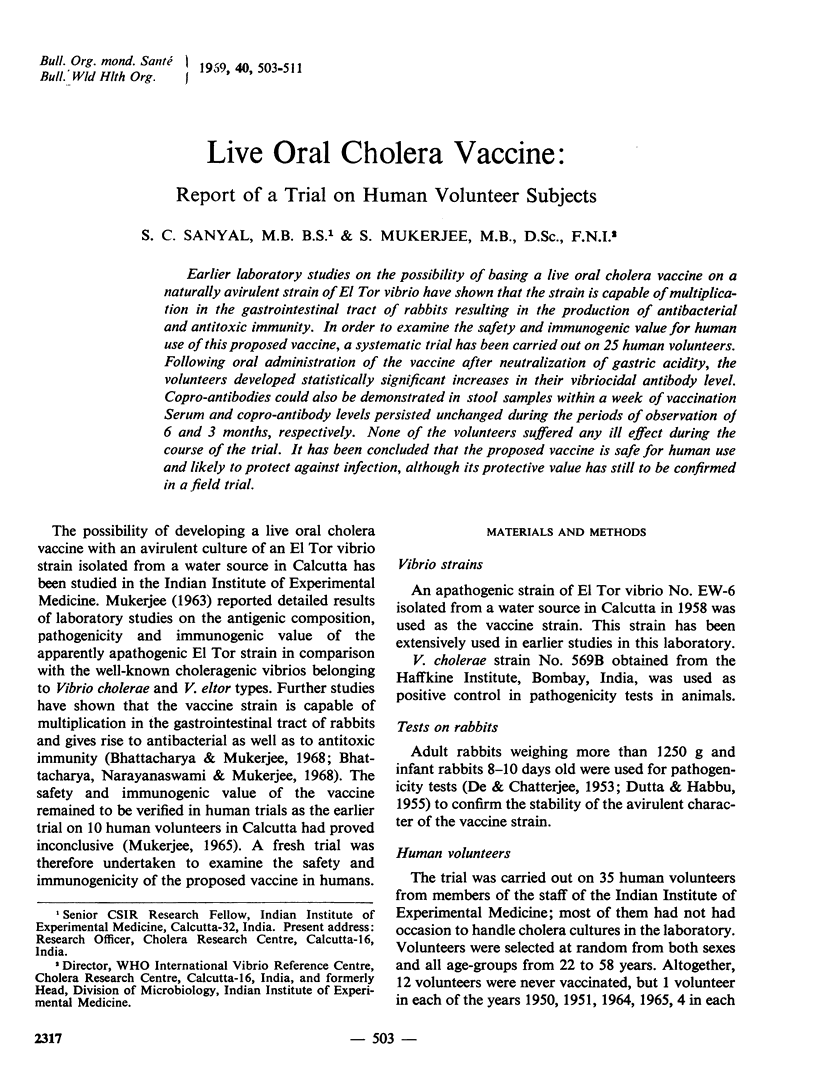
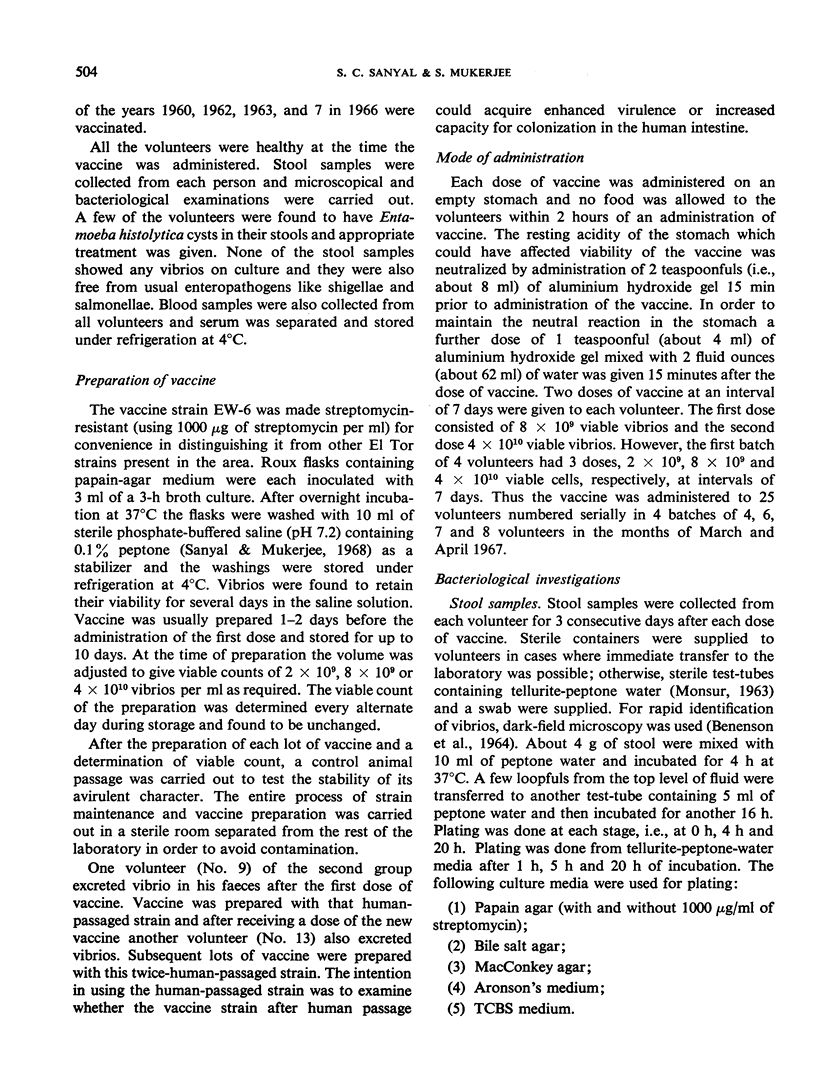
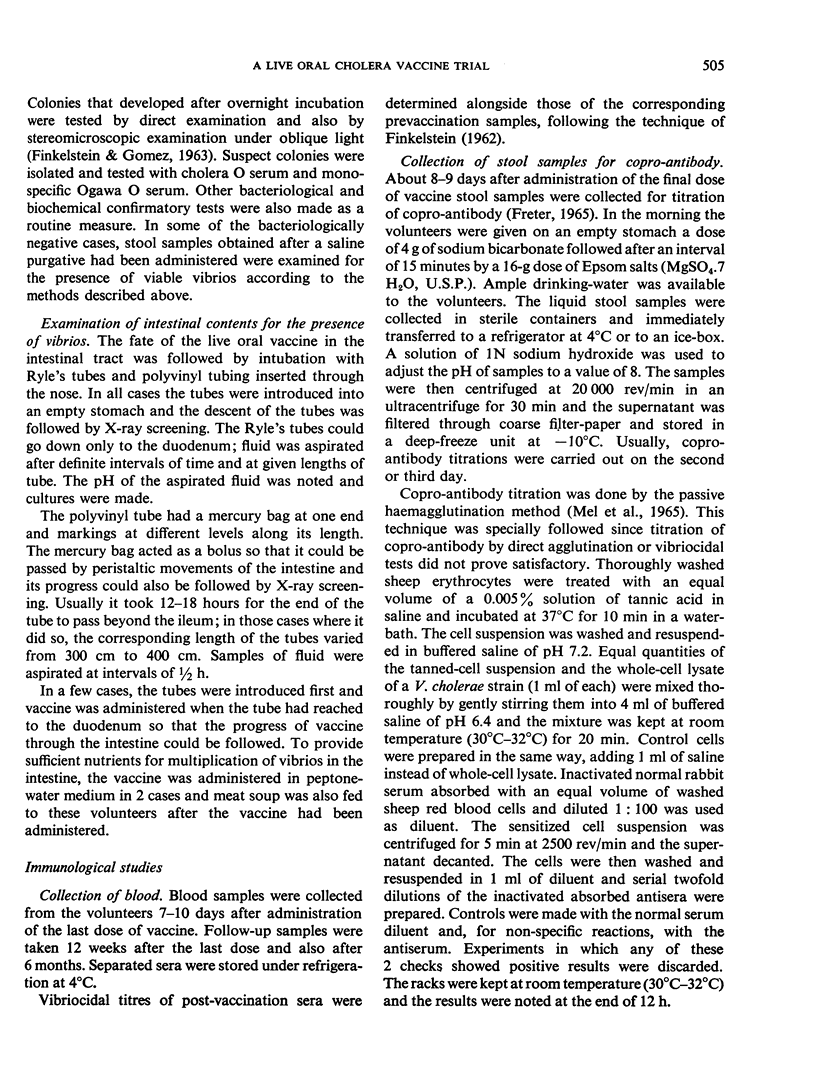
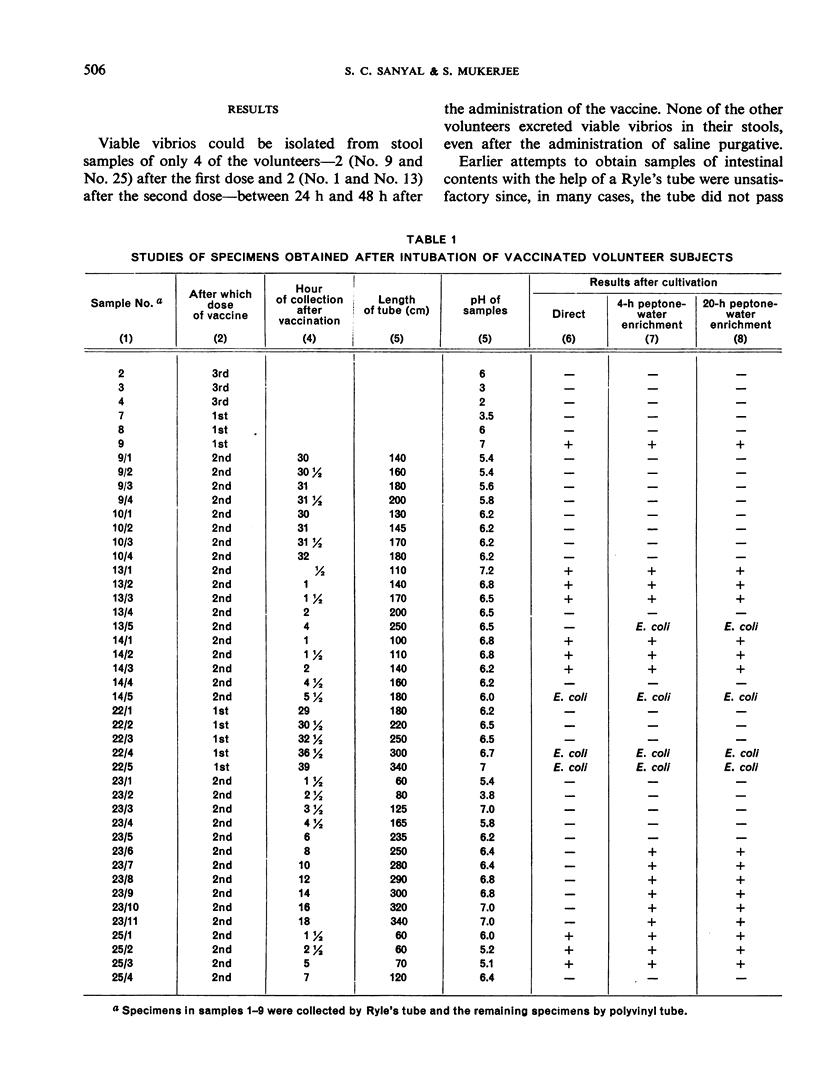
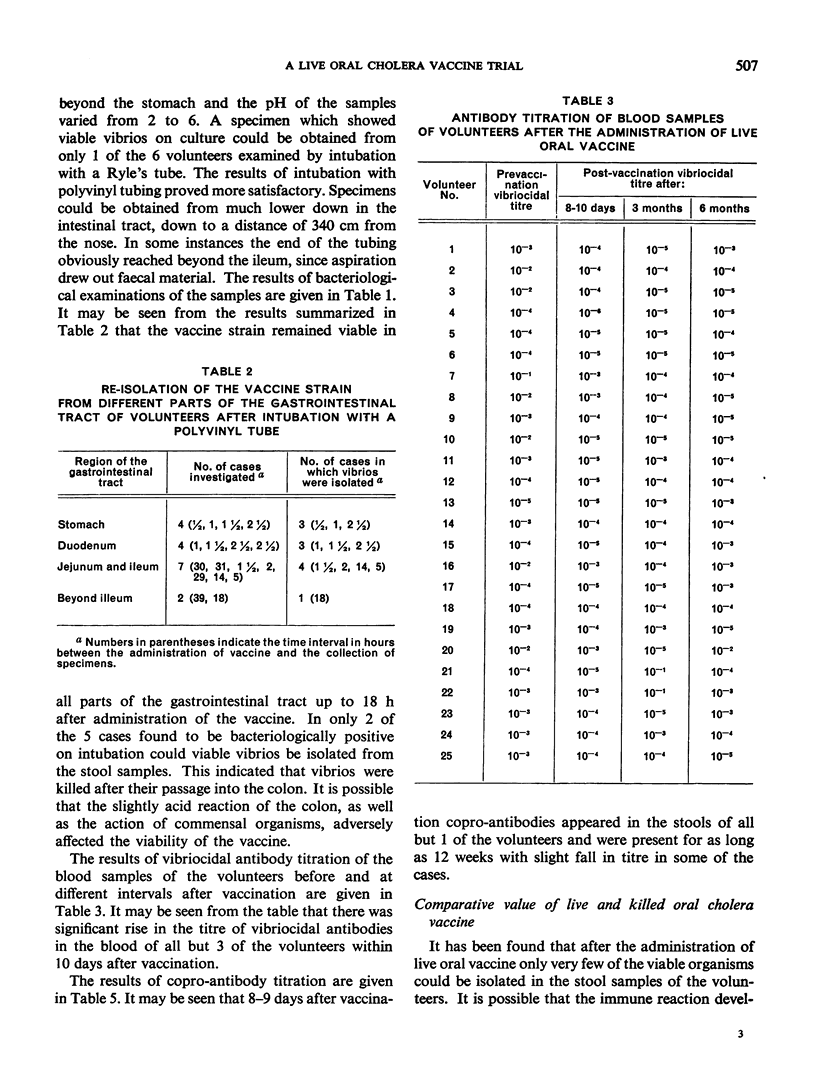
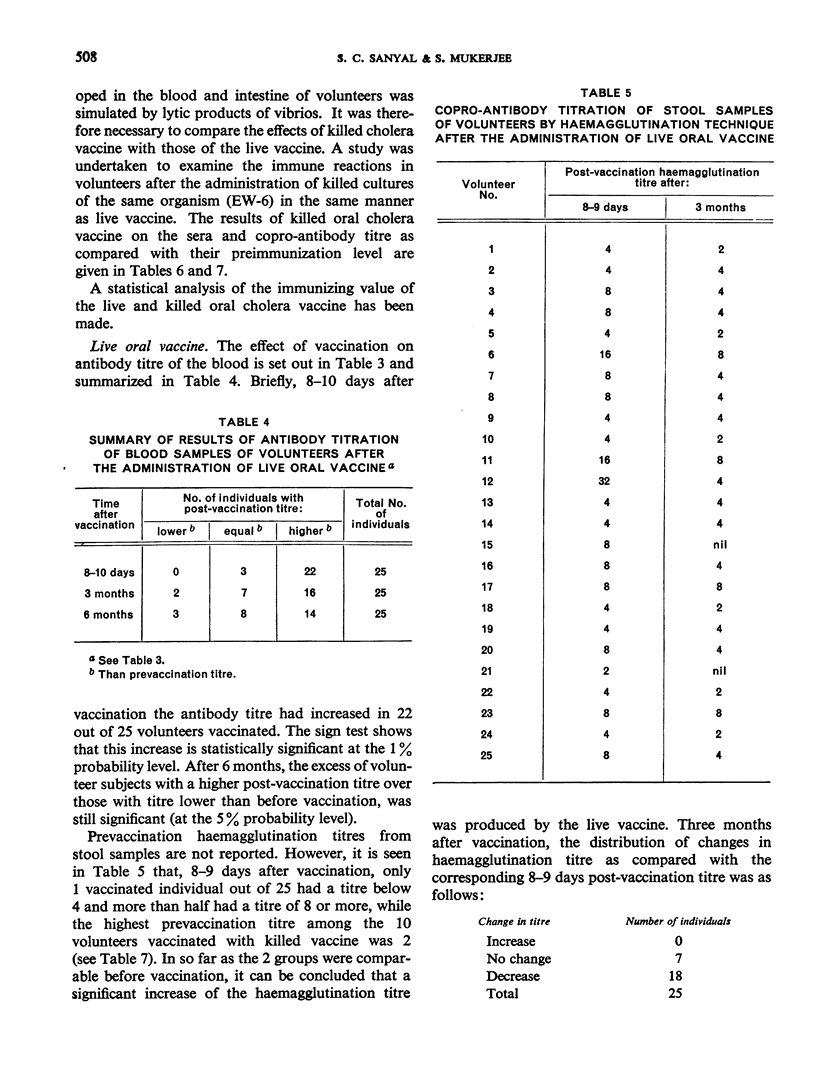
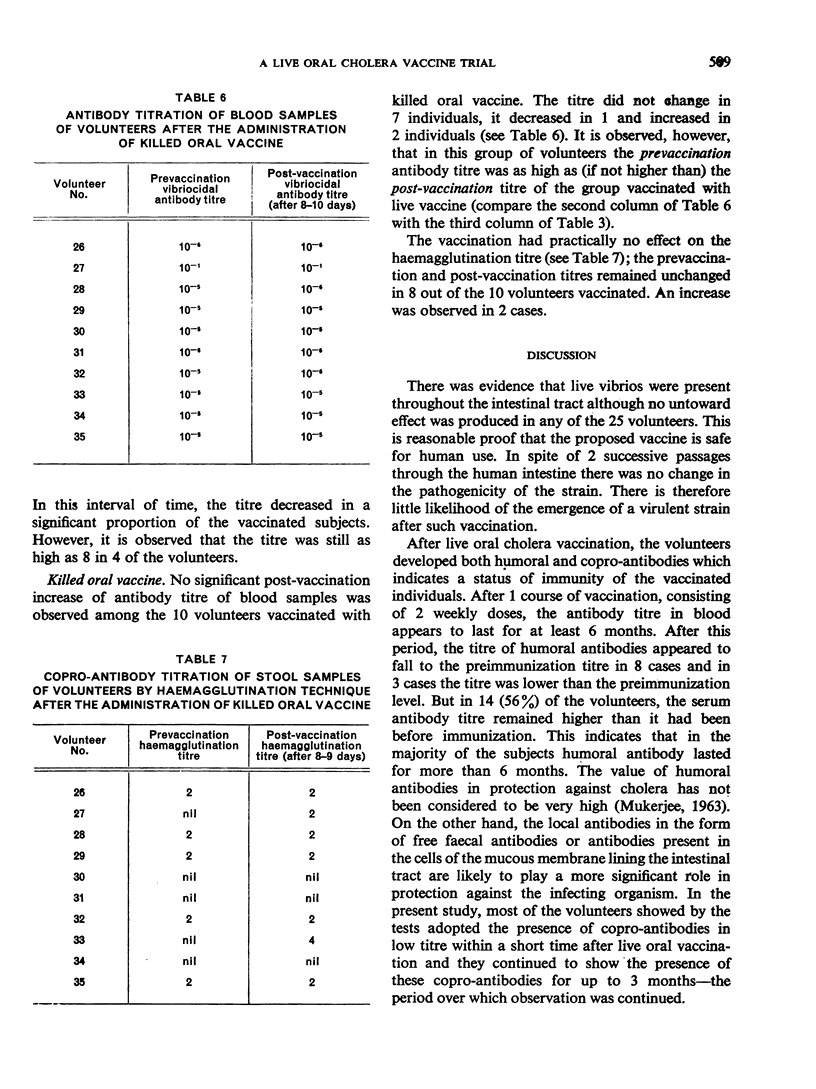
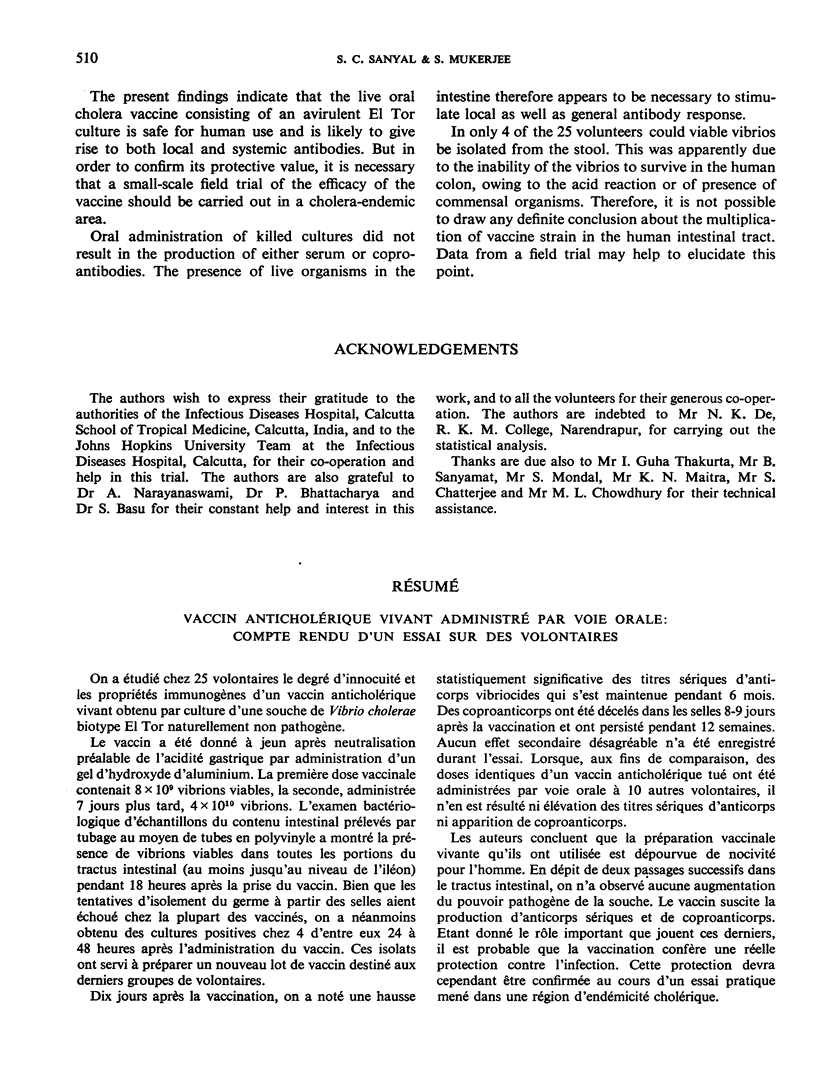
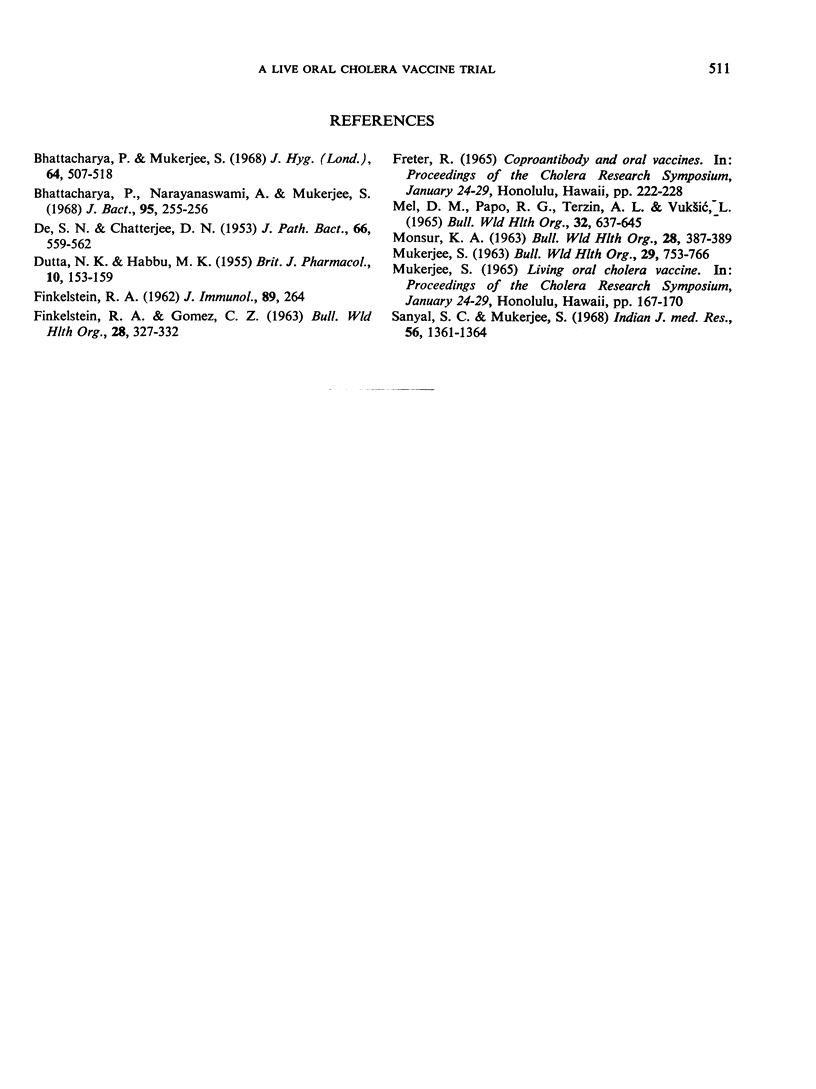
Selected References
These references are in PubMed. This may not be the complete list of references from this article.
- Bhattacharya P., Narayanaswami A., Mukerjee S. Production of antitoxic immunity by live oral cholera vaccine. J Bacteriol. 1968 Jan;95(1):255–256. doi: 10.1128/jb.95.1.255-256.1968. [DOI] [PMC free article] [PubMed] [Google Scholar]
- DE S. N., CHATTERJE D. N. An experimental study of the mechanism of action of Vibriod cholerae on the intestinal mucous membrane. J Pathol Bacteriol. 1953 Oct;66(2):559–562. doi: 10.1002/path.1700660228. [DOI] [PubMed] [Google Scholar]
- DUTTA N. K., HABBU M. K. Experimental cholera in infant rabbits: a method for chemotherapeutic investigation. Br J Pharmacol Chemother. 1955 Jun;10(2):153–159. doi: 10.1111/j.1476-5381.1955.tb00074.x. [DOI] [PMC free article] [PubMed] [Google Scholar]
- MUKERJEE S. PRELIMINARY STUDIES ON THE DEVELOPMENT OF A LIVE ORAL VACCINE FOR ANTI-CHOLERA IMMUNIZATION. Bull World Health Organ. 1963;29:753–766. [PMC free article] [PubMed] [Google Scholar]
- Mel D. M., Papo R. G., Terzin A. L., Vuksić L. Studies on vaccination against bacillary dysentery. 2. Safety tests and reactogenicity studies on a live dysentery vaccine intended for use in field trials. Bull World Health Organ. 1965;32(5):637–645. [PMC free article] [PubMed] [Google Scholar]
- Sanyal S. C., Mukerjee S. Preservation of cholera cultures. Indian J Med Res. 1968 Sep;56(9):1361–1364. [PubMed] [Google Scholar]


